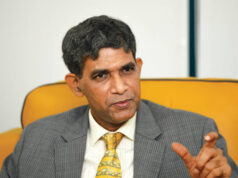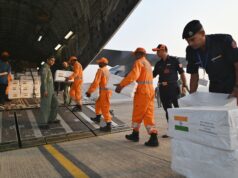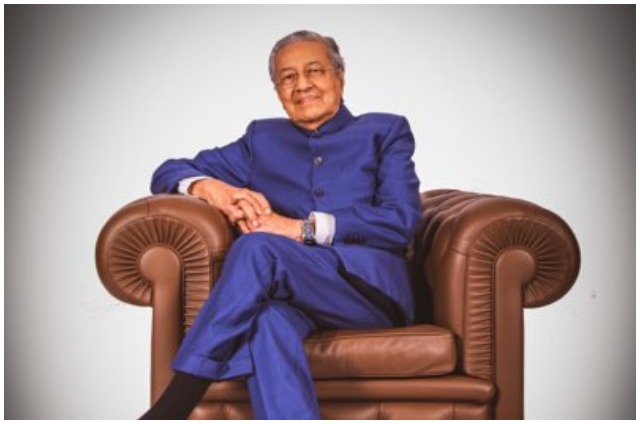New Delhi – On a sultry afternoon, a group of children gather in a room daubed with colourful paint in a poor area of Delhi near one of the city’s busiest bus and railway stations.
Sitting cross-legged on the floor as a fan whirs, the children discuss outbreaks of mosquito-borne diseases like Chikungunya and new cases of exploitative child labour in the city.
The huddle in the congested Sarai Kale Khan neighbourhood is an editorial meeting to plan the upcoming edition of Balaknama, or Voice of Children, India’s only newspaper produced by children who live and work on the streets.
The eight-page monthly newspaper reports on issues affecting thousands of underprivileged youths across India.
Balaknama·s team on a terrace next to the editorial room to finalize plans for their journal·s next issue, 16 September 2016 in Delhi. Since its 2003 launch, the paper has run hard-hitting stories against child labour, police atrocities and injustice to street and working children in India, prompting action from authorities. Photo: Siddhartha Kumar/dpa
Since its launch in 2003, the paper, whose staff members are sometimes called “slumkid reporters,” has published hard-hitting stories that have prompted action from authorities.
The paper has Hindi and English editions, with a total circulation of more than 8,000 copies. Chetna, an NGO that helps rehabilitate street children, is involved in producing the newspaper.
Balaknama has a core team of 14 reporters, aged 12 to 15, most of whom were previously street children or child labourers in Delhi and other northern Indian areas.
“We discuss issues such as child trafficking, child labour and drug or sexual abuse among children,” said Jyoti, a student who used to be a ragpicker, beggar and drug-addict before she took to reporting.
“We reach out to children living in slum areas, bus or railway stations or under flyovers to understand the problems they face,” she added.
Balaknama also has 64 younger staff who are illiterate, so they must dictate their stories to other reporters.
Shambhu, the newspaper’s 17-year-old editor, used to sell vegetables before turning to journalism full-time as a way to highlight the dire poverty and tribulations faced by street children.
“Street children have no identity, no dignity. We are like ghosts living on the margins of society. Police and officials look down upon us as delinquents and petty criminals,” he said.
“As victims who experienced discrimination and hardships first-hand, we report with an activist zeal on children who are suffering, forced to beg, facing abuse or employed in hazardous industries,” he added.
“With Balaknama, our voices are finally being heard,” Shambhu said.
There are as many as 18 million street children and child labourers in India, according to some estimates.
Chetan, 16, another ragpicker-turned-reporter, said Balaknama’s work had helped reunite runaways with their parents, get children admitted into schools and curtailed police abuses.
The reporters said they face opposition and threats when they uncover instances of child labour or physical or sexual abuse. A Balaknama team was surrounded and threatened with attack a few months ago at a slum where they were reporting on child marriage, Jyoti said.
Shanno, 19, a former editor, recounted how police at railway stations in several states forced children to carry the bodies of accident victims or those who committed suicide to nearby morgues.
The newspaper reported on the practice and the children also issued a formal complaint with the national commission for the protection of child rights. The government issued a notice to police and the practice was stopped.
Balaknama also helps street children receive formal educations. Reporters earn a stipend of around 5,000 rupees (75 dollars) each month from Chetna to support their education and tuition.
The editorial room at Sarai Kale Khan doubles as Chetna’s day-care centre for children who earn livelihoods as ragpickers at rail and bus stations.
Frail and with dishevelled hair, many of the children at the centre are drug addicts. They watch the editorial meetings with interest.
Nine-year-old Faizan, recovering from an addiction to liquid correction ink, is among the latest recruits for Balaknama. He is in the midst of transforming from ragpicking to reporting.
Shambhu, who started off as a young reporter and studied in a Chetna school, now aspires to become a reporter for a TV news channel so he can continue to advocate children’s rights.
“Balaknama has been a tool of empowerment for hundreds of children. It has given them an opportunity to articulate themselves and become agents of change,” Chetna’s director Sanjay Gupta said.
Balaknama has made street children aware of their rights and added purpose to their lives, he said.
“Faizan shows promise. Perhaps, he will be Balaknama’s editor one day,” Shanno said.
-dpa











